
Back to Sefton Park on a mild, overcast day, with an occasional chilly breeze. Just by the path descending to the southern end of the lake was a lovely surprise, a small tree with emerging pink blossom. I think it is Winter-flowering Cherry Prunus x subhirtella, a hybrid originating in Japan, and unknown in the wild.
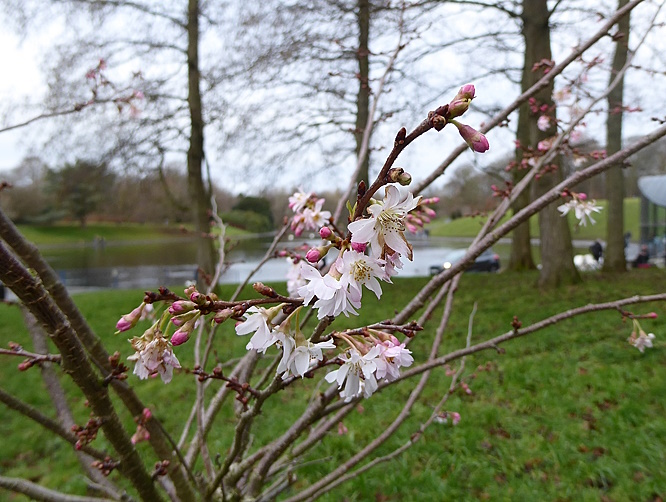
People were feeding the birds, as usual, and the Canada Geese and Coots were fighting to get it.
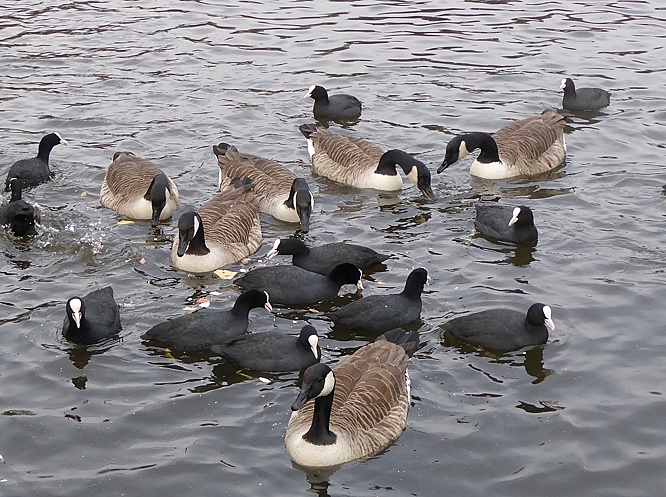
Several of the Coots were ringed, and we managed to read a couple of the codes. Later I discovered there is a much-improved system for reporting them, a website called the Waterbird Colour-marking Group. It allows you to report British-ringed Coots, Black-headed-Gulls, Curlews, Barnacle, Greylag, Canada and Pink-footed Geese, Moorhen, Shelduck and Wigeon. And it returns the results immediately from their database. The Coots we saw, LRF and LAN, had both been ringed in the park within the last few years, so weren’t exciting wanderers.
The usual birds were present in big numbers. Coots, of course, Feral Pigeons and Mallards. Spring was stirring up the Canada Geese, and many of the males were trying to impress their partners by honking for all they were worth.

Further out were two Mute Swans, last year’s cygnets apparently gone. Some Moorhens were pottering about on quiet grassy banks, minding their own business. One solo male Gadwall, possibly the same one as we saw on 6th November, was attracting the interest of a female Mallard. There were about a dozen male Tufted Ducks, but only one female. What’s happening there?
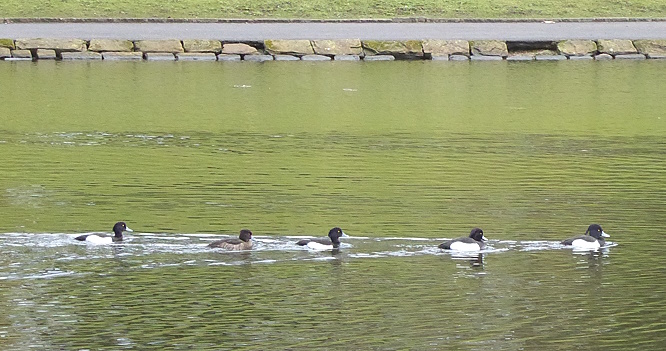
A lady passing by, seeing our binoculars, directed us up the western bank to a spot where there were bird feeders which usually attracted Ring-necked Parakeets. A couple of them were perching high in the trees. We also spotted this interesting fungus on a fallen log. It was some sort of small white bracket, frilly and looking rather like scallop shells. The older ones were a browner colour, but all were soft and flexible. I’m not good at fungi, but it might be from the genus Seletocutis, although they are said to be hard to differentiate.
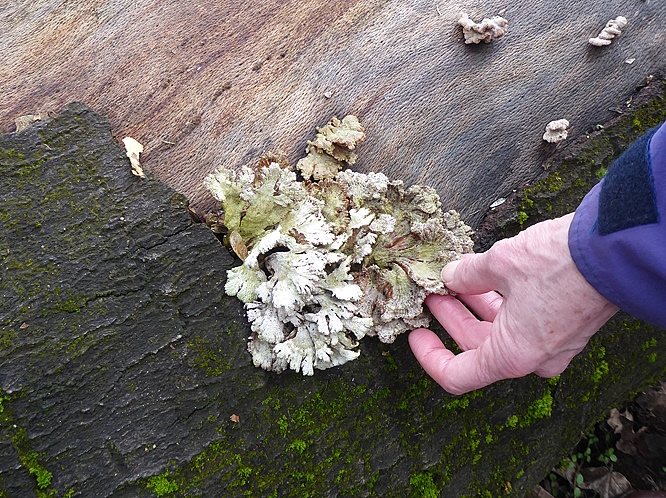
The Witch Hazel near the café was in full bloom and nearby was the bushy evergreen Sweet Box, Sarcococca confusa. It blooms in winter, and its white flowers have a strong sweet scent likened to honey or vanilla.

The lady who had directed us to the Parakeets had also said she thought Kingfishers were back in the park. We went along past the aviary but saw no sign of one. There might have been a Goldcrest in a Scots Pine overhead, but it was too deep in the foliage to be sure. There was another flowering tree on the corner by the Eros fountain, a Bodnant Viburnum Viburnum x bodnantense, and the sun also caught the wonderful stems of the Red-stemmed Dogwood.
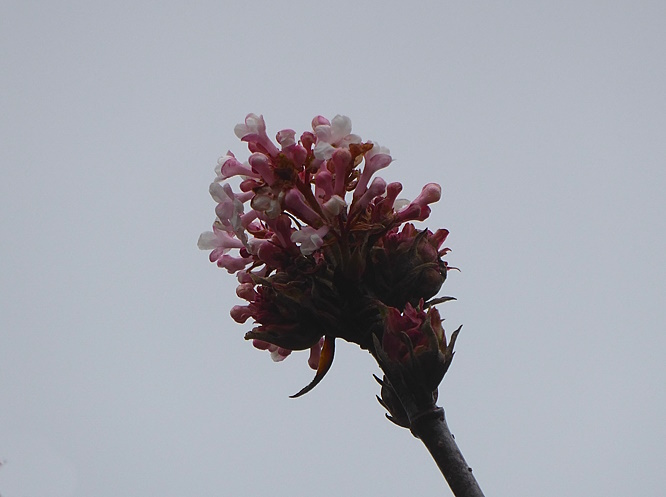
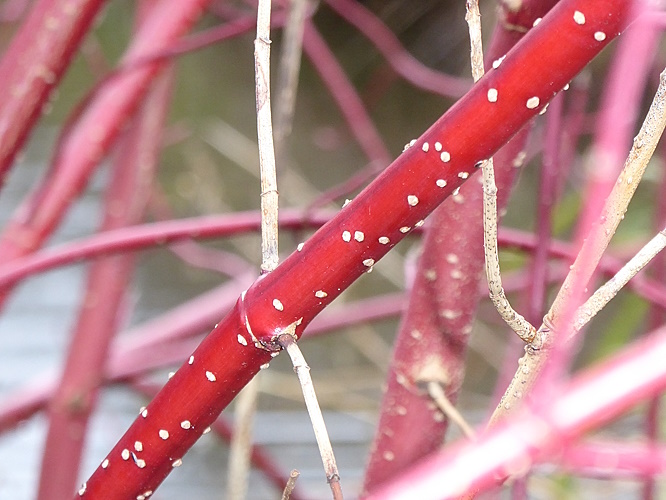
After getting cold while sitting for lunch, we went into the Palm House to warm up. Our impression was that many of the plants seemed to have had a recent problem, with sections of dry, brown leaves. There were also biological pest control tags hanging among the branches, containing tiny pupae of a parasitic wasp used to control whitefly.
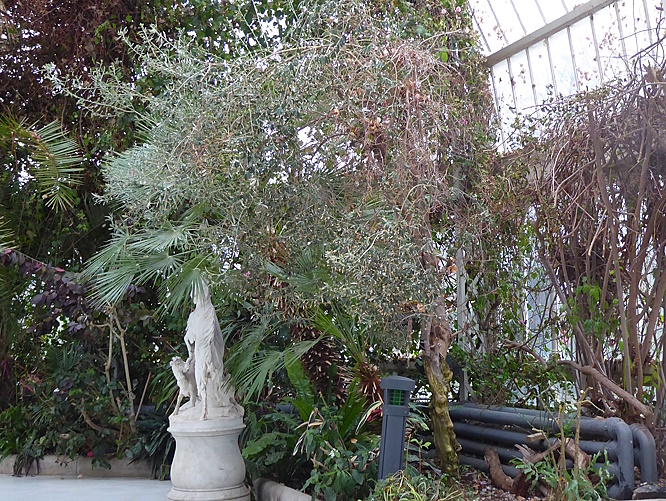
South of the Palm House is an area where there are bird feeders on both sides of the path. A Jay flew in and looked at us, but when we scattered seed on the path, all we got was this poor male Chaffinch, with something wrong with his feet. It appears to be something well-known in Chaffinches, and is caused by either a papillomavirus, or by Cnemidocoptic mites. The BTO says about 3-4 per cent of Chaffinches get this, and it is more common in winter, suggesting the affected birds are from the seasonal influx of migratory birds from mainland Europe. This poor little fellow was gobbling the easy food we had supplied and seemed less timid than usual. Hunger had overcome caution.
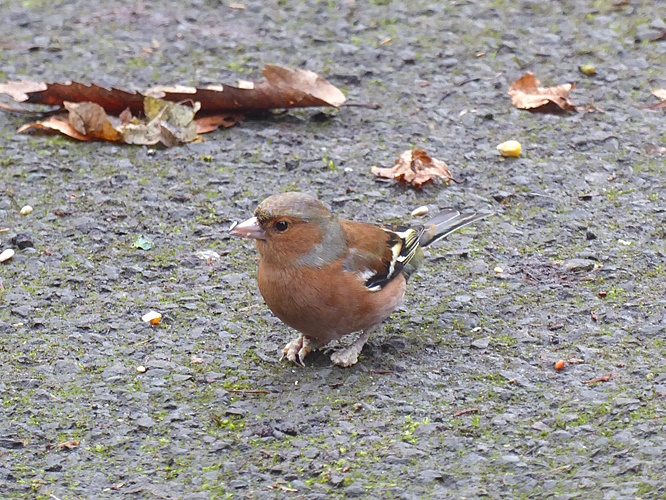
There was a very decorative feeder hanging on the other side of the path, well patronised by Blue Tits and Great Tits, and also a few Long-tailed Tits.
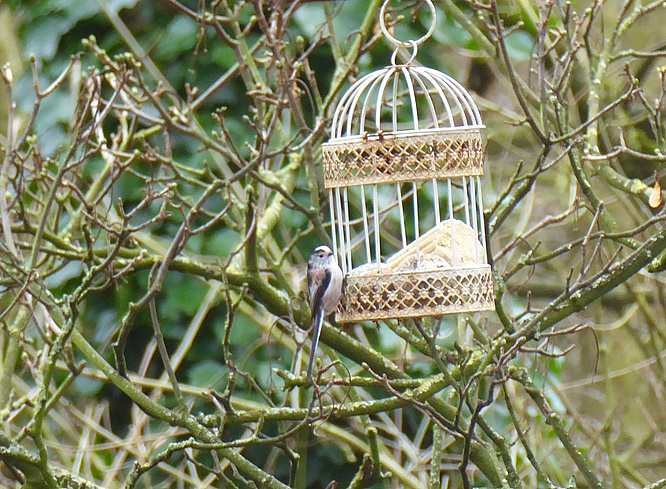
A small Hazel shrub was showing off its catkins (male flowers), and also the tiny female flowers with their protruding red stigmas.
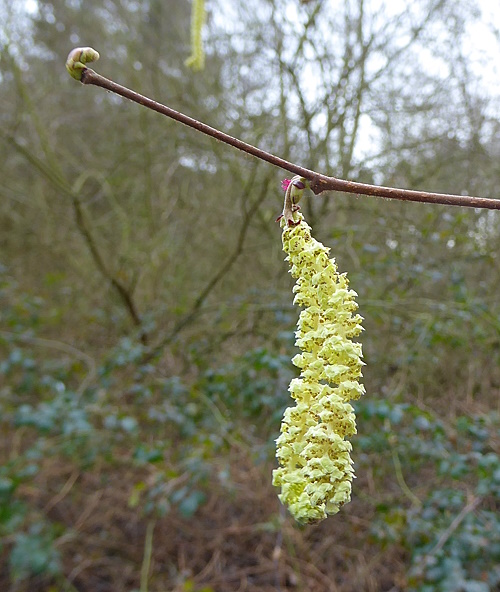
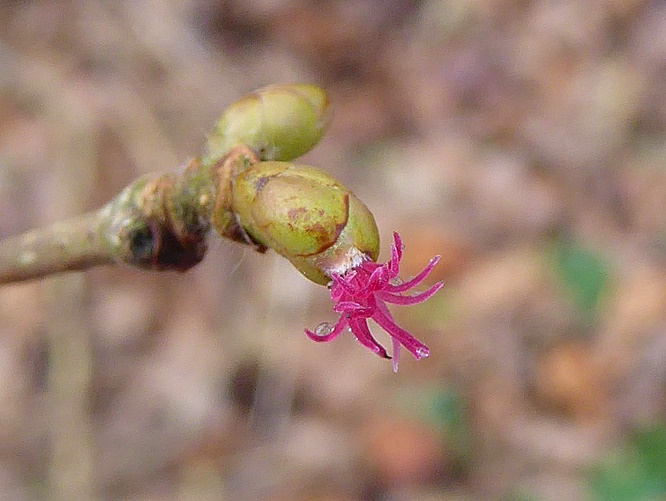
As we made our way back along the east side of the lake, we spotted a single Little Grebe by the island, and we were struck by how many people (and dogs) were out, and also how many more birds had congregated since the morning. There must have been getting on for 300 Black-headed Gulls wheeling above the places where people were scattering food. Very few had black heads coming in, but not all had juvenile plumage. Perhaps one- or two-year olds, not yet mature?
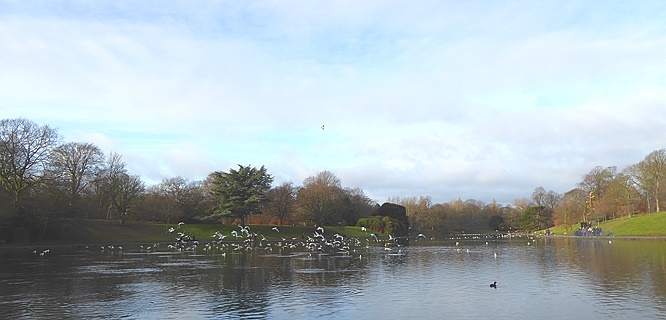
On the far side of the lake a young man was sitting on a bench playing a guitar and singing “The Fool on the Hill” (quite well). His song carried gently over the water.
Public transport details: Bus 82 from Elliot Street at 10.10, arriving Aigburth Road opposite Ashbourne Road at 10.30. Returned on 82 bus from Aigburth Road / Jericho Lane at 2.50, arriving city centre 3.10.
